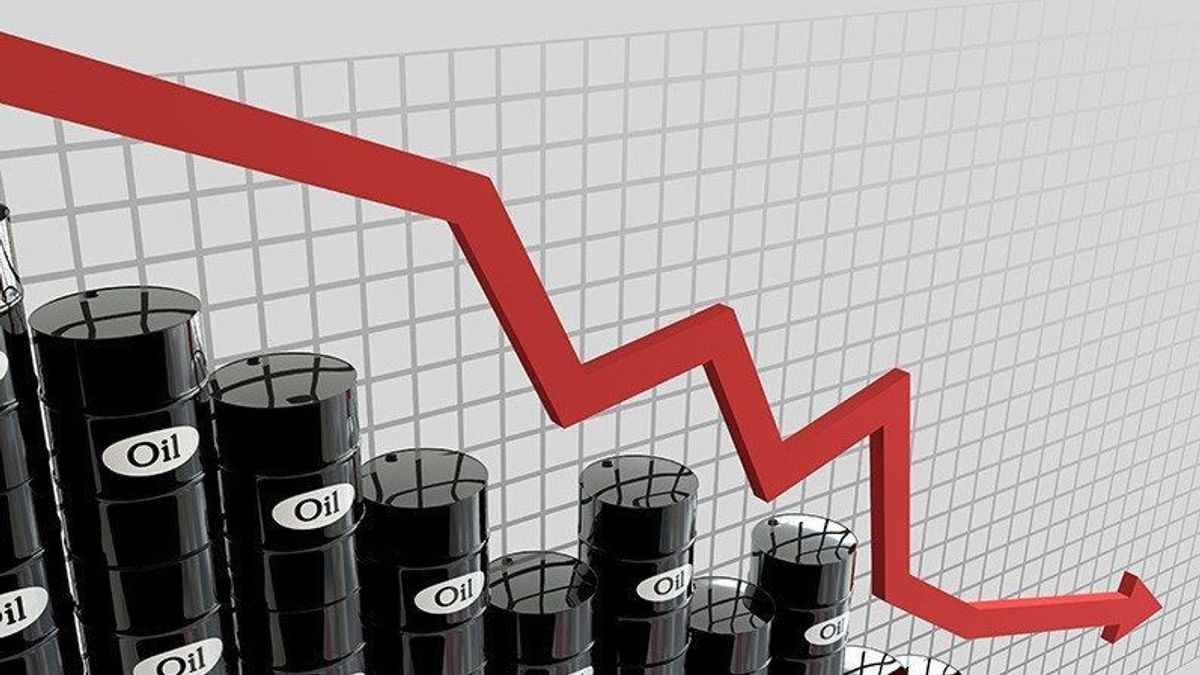JAKARTA - Ahead of the meeting of the Organization of the Petroleum Exporting Countries and its allies (OPEC+) on Sunday, December 4, the price of oil futures slipped 1.5 percent in reshuffled trading at the end of Friday (Saturday morning WIB) transactions. The EU (EU) ban on Russian crude oil on Monday, December 5, also had an impact.
Brent crude futures for February delivery slumped 1.31 dollars, or 1.5 percent, to settle at 85.57 dollars a barrel. U.S. West Texas Intermediate (WTI) crude futures for January delivery cut 1.24 dollars, or 1.5 percent, to close at 79.98 dollars a barrel.
Both contracts fell, after coming out and coming out of negative territory, but posted their first weekly increase of about 2.5 percent each for Brent and 5.0 percent for WTI, after three consecutive weeks of declines.
"Traders will hesitate to sell over the weekend if there is a growing roar that OPEC+ might try to surprise the market at their weekend meeting," said Phil Flynn, an analyst at the Price Futures group.
OPEC+ is widely expected to remain on its latest target of reducing oil production by 2 million barrels per day (bpd) when meeting on Sunday, but some analysts believe crude oil prices could drop if the group does not make further cuts.
"Hady oil carries a more significant risk over the weekend and could fluctuate greatly at the opening next week," said Oanda analyst Craig Erlam, another analyst echoed view.
Russian oil production could drop 500,000 to 1 million barrels per day in early 2023 due to the EU's ban on sea imports from Monday, two sources at major Russian manufacturers said.
Poland approved the European Union's agreement for a price limit of 60 US dollars per barrel on Russian seaborne oil, which allows the bloc to move forward by formally approving the deal over the weekend, Polish Ambassador to the European Union Andrzej Sados, said.
European Commission President Ursula von der Leyen said the Russian oil price limit would be adjusted over time so the European Union could react to market developments.
Russian Ural crude trades around $70 per barrel as of Thursday afternoon. The limit was designed to limit revenue to Russia, while it did not result in a spike in oil prices.
Speaking of bullish signals, China will announce easing the COVID-19 quarantine protocol in a few days, sources told Reuters, which would be a major change in the world's second-largest oil consumer policy, though analysts warn a significant reopening of the economy is likely months away.
The number of US oil rigs, future production indicators, remains unchanged this week, according to data from Baker Hughes. Concerns are also accelerating the US relief that it will no longer increase production in a short time.
Government data also shows that the US employer added more work than expected in November while average income per hour also increased, potentially giving the Federal Reserve more incentives to raise interest rates.
The English, Chinese, Japanese, Arabic, and French versions are automatically generated by the AI. So there may still be inaccuracies in translating, please always see Indonesian as our main language. (system supported by DigitalSiber.id)













